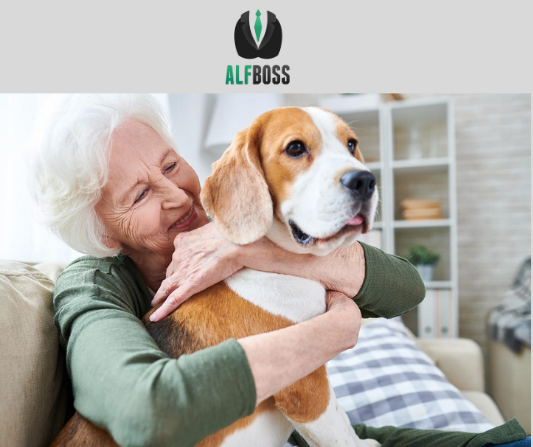
Pets in the facility
Many senior living facilities are moving towards being pet friendly because they see the benefits that pets can bring to the senior population. Studies performed by the US National Library of Medicine show that pets are good for your physical and mental well-being and can reduce feelings of stress, isolation, and depression by mental stimulation that can raise self-esteem in seniors. While having a pet may be a good idea for many residents in your facility there are certainly others where the benefit of having a pet is outweighed by the damages the pet may cause due to increased care needs. It is up to each facility to have a written policy in place regarding pets living or visiting in the residential care facility. Check out the following regulations provided by the Ohio Department of Health:
Rule 3701-16-11 | Pets
(D) Residents may keep pets if allowed by facility policy. If a residential care facility allows residents to keep animals or pets, or has facility pets, the facility shall, in consultation with a veterinarian licensed to practice veterinary medicine under Chapter 4741. of the Revised Code, establish and implement a written protocol regarding animals and pets that protects the health and safety of residents and staff members. At minimum, the written protocol shall include:
(1) An annual physical examination, including an examination for internal and external parasites;
(2) Vaccinations for common infectious agents, including rabies;
(3) Any other preventive care necessary to protect the health, safety and rights of residents;
(4) Procedure to follow if an animal:
(a) Bites a person; or
(b) Becomes ill or injured;
(5) For resident pets, if the resident is transfered, discharged or otherwise unable to care for the pet, responsibilities for care of the pet until a family member or sponsor can retrieve the pet;
(6) In the case of a facility pet, the name of the designated member or members of the staff responsible for the care of the animal and for maintaining the protocol, including medical records for the animal; and
(7) An evaluation of the medical needs of residents.
Top Takeaways:
- (2) Vaccinations for common infectious agents, including rabies;
Having immunization records for any animals residing in the facility is almost as important as having records for your staff. If a staff member or resident is bitten by the animal, you need to be able to produce documentation showing that the animal is immunized.
- (7) An evaluation of the medical needs of residents.
While some residents may request to have a pet in the facility you must weight the risk vs. reward of a pet under their care. If a resident is not independent enough to care for the pet it would be a recipe for disaster to bring in an animal for them to care for.